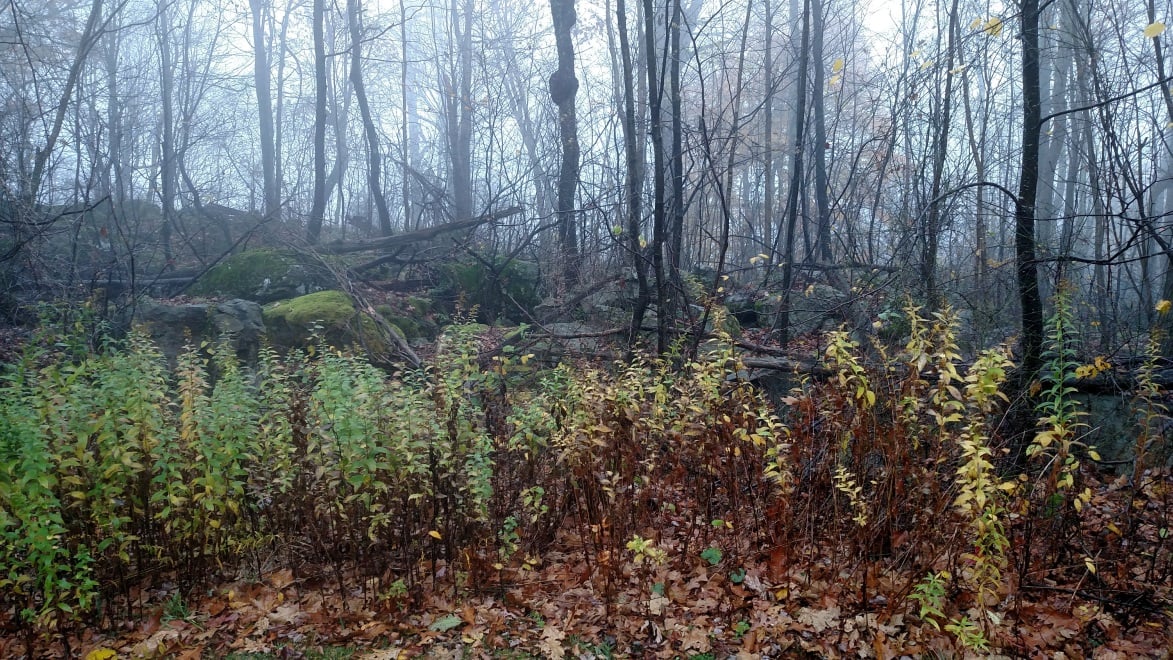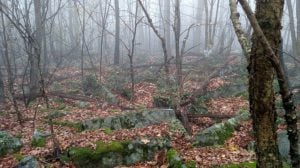
On a foggy November morning in Western Maryland, I find myself alone on a mountain top. Although Halloween had pasted, the atmosphere is something out of a Stephen King story. I am here to evaluate the area where a proposed telecommunications tower will be located.
What does archaeology have to do with telecommunications tower? The short answer is that telecommunications towers are considered federal undertakings because of the FCC license required to operate the tower. Federal undertakings in turn are subject to environmental review which includes the potential impact on cultural resources. As defined by the National Park Service:
Cultural resources can be defined as physical evidence or place of past human activity: site, object, landscape, structure; or a site, structure, landscape, object or natural feature of significance to a group of people traditionally associated with it.
What that means in practice is that the potential impacts to above-ground and below-ground historic places are evaluated for direct and visual effects.
 Back to the eerie mountain top. I find myself there to access the direct effects that constructing a tower compound will have on potential historic resources. They are potential because this area had not been previously tested by professional archaeologists. So there was the chance that there could be something here. I am there with my trusty tools: shovel, screen, and trowel. Before digging can commence, a walk-over of the project area is conducted to locate historic resources on the surface. And that is when I saw it.
Back to the eerie mountain top. I find myself there to access the direct effects that constructing a tower compound will have on potential historic resources. They are potential because this area had not been previously tested by professional archaeologists. So there was the chance that there could be something here. I am there with my trusty tools: shovel, screen, and trowel. Before digging can commence, a walk-over of the project area is conducted to locate historic resources on the surface. And that is when I saw it.
The project area is covered in boulders. Do not let the picture fool you. There is no dirt in that picture. The leaves are sitting on rocks. Needless to say, I will not be digging any holes in that. However, this does not eliminate my responsibilities as an archaeologist. There may still be signs of human activity on these stones. Although more commonly seem in rock shelters, petroglyphs, rock art, are common enough in the mountains that I must take care to identify such resources. This would require a change in my methodology. Rather than casually but systematically walking back and forth across the project area followed by the excavation of shovel test pits, I was going to need to very carefully crawl and walk across these boulders in a systematic fashion to look for evidence of human activity.
 First I would need to change my tool. I found a fallen stick about my height and used my machete to trim the twigs off of it, creating a probe and walking stick. I had three things to worry about: wet leaves, wet moss, and wet rocks. Second, I walked around the perimeter of the project area placing flags so that I could turn the project area into a grid. Third, I slowly walked the X- and Y-axis of the grid to look for signs of human activity.
First I would need to change my tool. I found a fallen stick about my height and used my machete to trim the twigs off of it, creating a probe and walking stick. I had three things to worry about: wet leaves, wet moss, and wet rocks. Second, I walked around the perimeter of the project area placing flags so that I could turn the project area into a grid. Third, I slowly walked the X- and Y-axis of the grid to look for signs of human activity.
The final result was that I found nothing. Which is not a bad result, hopefully it meant that this project would not disturb any historic resources. The point of my undertaking was not to find something rather it was to identify the probability that something was there. My adventure was complete, at least for that day.